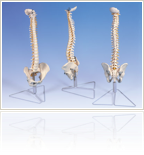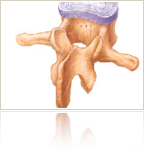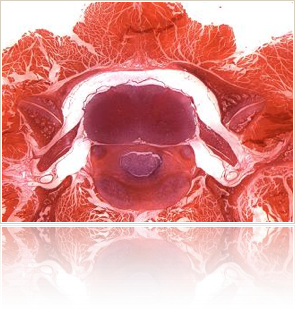Implantation of the tissue engineered construct is the final step in treatment of intervertebral disc problems. This step occurs only after adult MSCs have been harvested, differentiated, and incorporated into a scaffold. The actual procedure used to implant the disc would be very similar to those used when implanting the artificial discs. After the discectomy, the scaffold containing the tissue construct would be placed in-between the vertebrae. It is likely that the surface of the construct would need to be treated so it would be more readily accepted by the body. Matrigel could be applied to reduce the body’s innate immune response, thus reducing inflammation and edema. It is also likely that some sort of temporary support will be required to keep the construct in place as it incorporates into the body. It has been shown that this can in fact be done. A near human sized intervertebral disc was created by expanding cells in-vitro on a scaffold. This construct was then implanted into a mouse model, and the tissue remained viable over a significant period of time [5].
Once inside the body, the PLGA scaffold material will slowly degrade as the implanted tissue begins to incorporate itself with the natural tissue in the body. Over time, the scaffold will disappear, leaving only the viable tissue engineered intervertebral disc in its place. This would allow the patient to return to normal activities, having retained their normal spine mechanics and eliminated the problem.
















